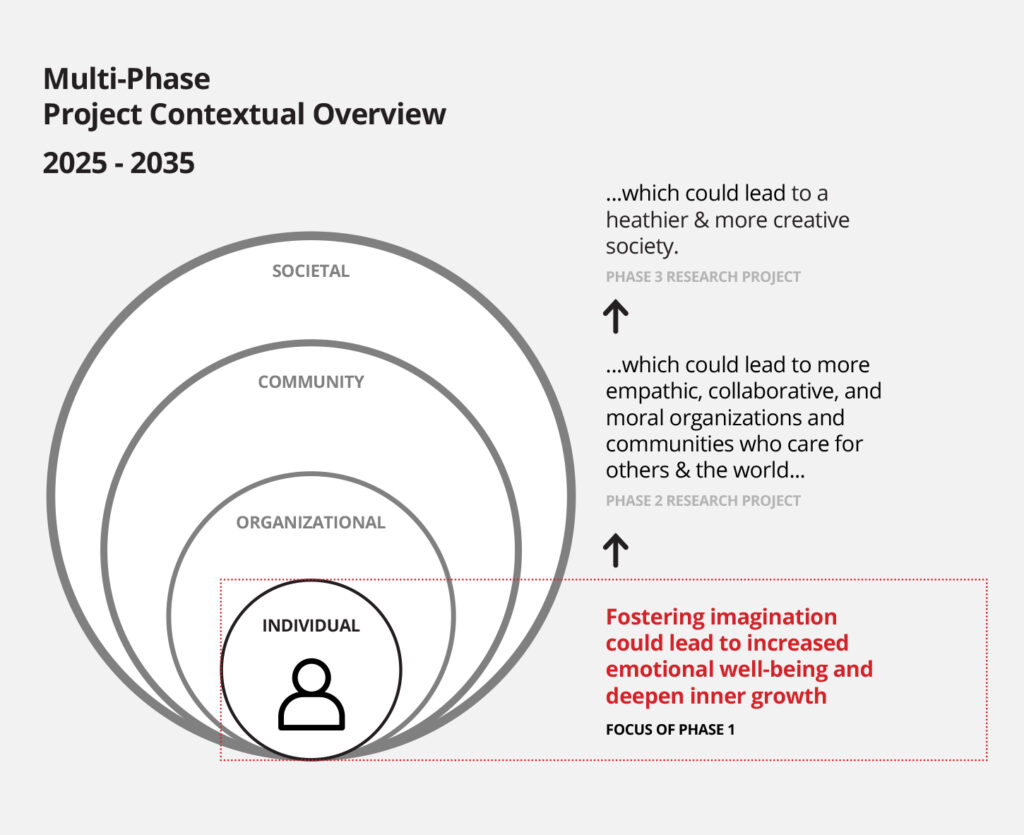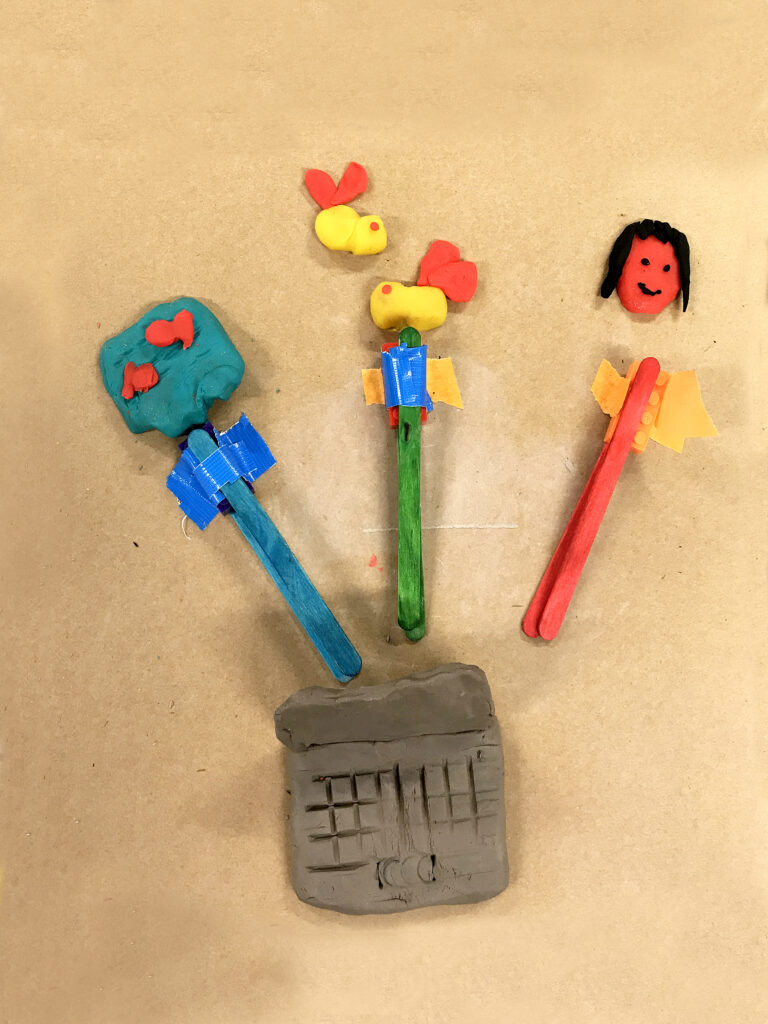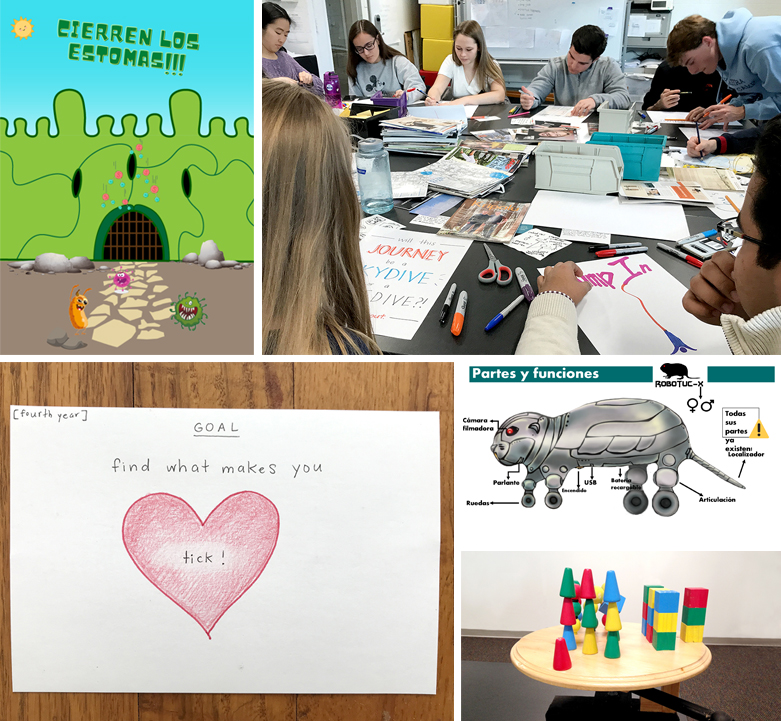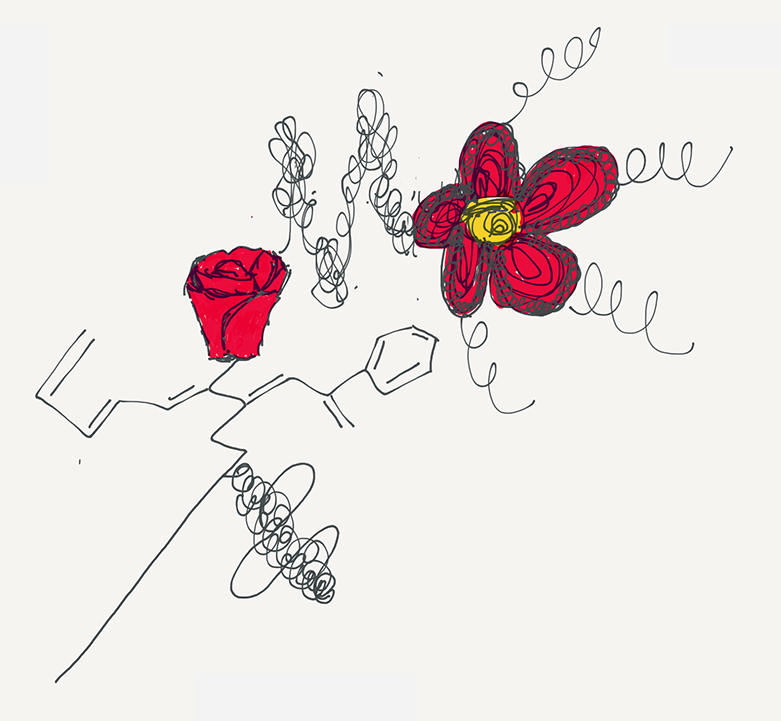IMAGINATION & WELL-BEING
An integrated approach to boost imagination and emotional well-being
Emotional well-being and imagination are strongly connected, suggesting a symbiotic relationship in which both constructs are critical for challenging dominant social views and surfacing unconventional, positive alternatives. An integrated approach can lead to stronger emotional well-being habits that can help individuals and society harness the potential of imagination to make change. This project is rooted in two hypotheses:
- Fostering imagination could lead to increased emotional well-being and deepen inner growth, which makes people more optimistic, happier, and less stressed, feeling more confident to take risks, embrace their views, and envision positive paths.
- Integrating long-term mindfulness and metacognitive activities with imagination and everyday creativity practice could lead to more empathic, collaborative, and moral individuals, who have developed healthier habits and a creative mindset.

CREATIVITY & EDUCATION
Cultivating Unbound College Students: A Longitudinal Study on Deliberate Creativity in Higher Education
Prevailing Higher education (HE) approaches emphasize critical thinking and technical skills over the development of creativity and emotional skills. Isolated creativity initiatives have attempted to strengthen students’ social-emotional health (SEH), but students still struggle to self-actualize and become creative thinkers. This lack of individual creativity contributes to a lack of collective imagination in society. Integrating deliberate creativity (DC) in HE can lead to positive personal outcomes and help build the foundation for a more creative society filled with change-makers.
Creativity is the ability to generate ideas that are both novel and task appropriate in any domain. It is also an attitude characterized by willingness to explore possibilities and take risks; that is, the deliberate attempt to look at the world in a new light. This 4-year study will explore the connection between SEH, problem-solving, and individual creativity in HE by understanding the impact of DC training throughout the college journey. Students’ creativity, productivity, and wellbeing dimensions will be assessed quantitatively through questionnaires and tests, and qualitatively using interviews, observations, and journalling. Findings will contribute to identifying pedagogical strategies that foster students’ creative mindset and strengthen their SEH and problem-solving skills.

CREATIVITY & SCIENCE
Creativity in doctoral education
We all have the ability to imagine a world where everyone is happy and healthy, and the planet is safe. Our imagination is what distinguishes us from other species and even the more advanced computers. Though not typically associated with science, politics, sustainability, or happiness, imagination and creativity are powerful tools for understanding the past and reimagining the future. By fostering visioning, playing, and dreaming, we can create healthier, more sustainable, collective futures.
With the data collected from teaching three creativity courses to PhD biology students, two papers were published sharing our learnings. Overall, while 24 expert biologists showed a similar understanding of creativity, their knowledge and background appeared to have impacted assessments. The products deemed the most creative and original did not necessarily score as the most scientifically impactful or most relevant. To evaluate creativity in scientific products, multiple considerations should be needed to measure domain-specific components more reliably in doctoral education.

IMAGINATION & WELL-BEING
The Role of Metacognition
Imagination has been extensively investigated but research examining it from an integrated perspective combining cognitive neuroscience, psychology, and design is rare. As a qualitative researcher, I design longitudinal studies in the wild to investigate imagination as a catalyst for inner growth and well-being through an interdisciplinary lens. I use prototypes, hands-on activities, frameworks, and interactive experiences to explore how people imagine and apply creativity in everyday life situations. College students, professors, designers, and scientists are participants of this project.
Core outputs have included the development of creativity-led, domain agnostic curricula, courses, and resources (innovative pedagogical methods and activities) for teaching creativity at undergraduate and graduate levels, professors, and professionals. These resources aim to help people develop metacognitive skills and mindfulness to reconnect with their superpowers and feel more confident on their own ideas.

You must be logged in to post a comment.